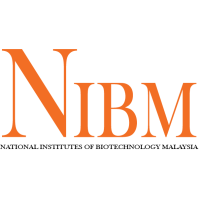Momordica charantia, also known as bitter melon or ‘peria katak’ in Malaysia, is a member
of the family Cucurbitaceae. Bitter melon is an excellent source of vitamins and minerals that
made it extensively nutritious. Moreover, the seed, fruit and leave of the plant contain bioactive
compounds with a wide range of biological activities that have been used in traditional
medicines in the treatment of several diseases, including inflammation, infections, obesity and
diabetes. The aim of this study was to evaluate changes in urinary metabolite profile of the
normal, streptozotocin-induced type 1 diabetes and M. charantia treated diabetic rats using
proton nuclear magnetic resonance (1
H-NMR) -based metabolomics profiling. Study had been
carried out by inducing diabetes in the rats through injection of streptozotocin, which exhibited
type 1 diabetes. M. charantia extract (100 and 200 mg/kg body weight) was administrated to the
streptozotocin-induced diabetic rats for one week. Blood glucose level after administration was
measured to examine hypoglycemic effect of the extract. The results obtained indicated that M.
charantia was effective in lowering blood glucose level of the diabetic rats. The loading plot of
Partial Least Square (PLS) component 1 showed that diabetic rats had increased levels of lactate
and glucose in urine whereas normal and the extract treated diabetic rats had higher levels of
succinate, creatine, creatinine, urea and phenylacetylglycine in urine. While the loading plot of
PLS component 2 showed a higher levels of succinate, citrate, creatine, creatinine, sugars, and
hippurate in urine of normal rat compared to the extract treated diabetic rat. Administration of
M. charantia extract was found to be able to regulate the altered metabolic processes. Thus, it
could be potentially used to treat the diabetic patients.
Data dan Sumber
| Field | Value |
|---|---|
| Bidang Penyelidikan | Bioteknologi |
| Objektif Sosioekonomi | Advanced Experimental and Applied Science |
| Penerbit | |
| Lesen | License Not Specified |
| Tahap Akses Awam | Public |
| Modified | 2020-01-08 |
| Release Date | 2019-12-05 |
| Identifier | 3dc154db-f0a4-4cd0-a2f8-adaebb613a09 |
FULL-TEXT http://www.ifrj.upm.edu.my/22%20(03)%202015/(58).pdf

